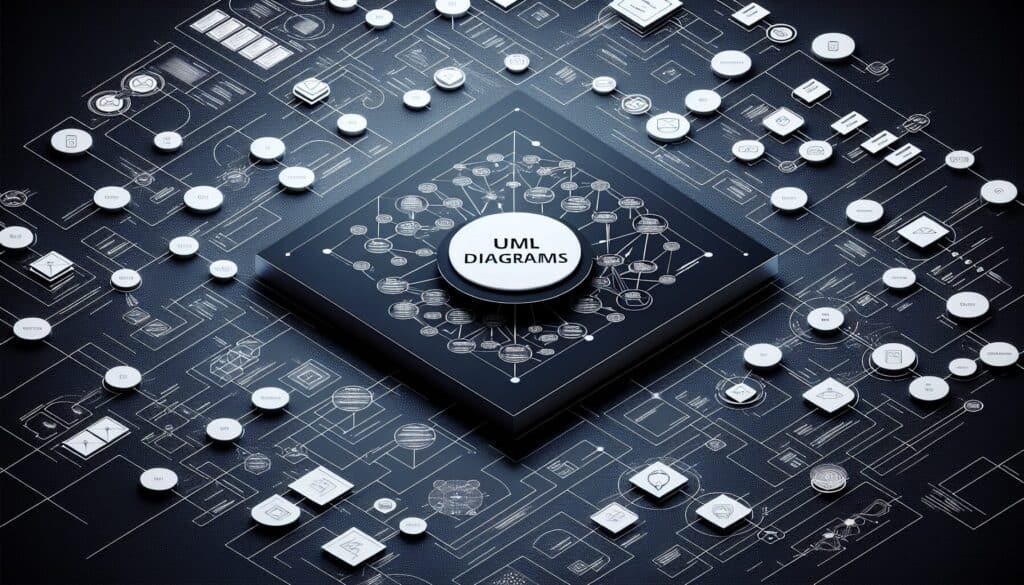To provide a standard way to visualize the design of a system.
- 方法: 工程, 产品设计, 项目管理
UML 图表

UML 图表
- 设计文档, 设计过程, 设计思维, 项目管理, 质量管理体系(QMS), 軟體開發工具包 (SDK), 软件工程, 系統建模語言(SysML), 统一建模语言(UML)
目标
如何使用
- Uses a set of graphical notations to create visual models of software systems, including their structure, behavior, and interactions. Different types of UML diagrams (e.g., class, sequence, use case) serve different purposes in the software development lifecycle.
优点
- Standardized and widely understood; Improves communication among stakeholders; Helps in identifying potential flaws early in the design process; Supports various stages of software development.
缺点
- Can be complex and time-consuming to create and maintain, especially for large systems; Some diagrams can be difficult for non-technical stakeholders to understand; Risk of over-modeling or creating unnecessary diagrams.
类别
- 工程, 产品设计, 项目管理
最适合:
- Visualizing, specifying, constructing, and documenting the artifacts of a software-intensive system.
UML (Unified 建模语言) diagrams serve as a foundational tool in software engineering, providing a graphical representation of various aspects of systems that enhances both understanding and documentation. They are utilized extensively across industries such as aerospace, automotive, healthcare, and information technology to depict everything from system architecture to process flows and user interactions. For instance, in the healthcare sector, use case diagrams can illustrate patient interaction with medical software systems, while class diagrams can detail the underlying database structures. Various stakeholders such as business analysts, developers, project managers, and system architects engage with UML diagrams during critical phases of a project, such as requirements gathering, system design, and during the implementation of Agile and DevOps methodologies. This collaborative approach facilitates effective communication, ensuring that technical and non-technical team members align on project goals and specifications. The standardization brought by UML also aids new team members or cross-functional teams in quickly assimilating project knowledge, as the visual representation provides an intuitive understanding of the system’s components and their relationships. Beyond visualization, UML diagrams assist in modeling dynamic behaviors and interactions among different system parts, helping to identify potential design flaws, inefficiencies, or areas of risk early in the development cycle. Additionally, the broad acceptance of UML across various educational platforms enhances the ease of creating interchangeability within teams, aiding in smoother transitions between phases like design to implementation or testing.
该方法的关键步骤
- Identify the purpose and scope of the system.
- Define the key stakeholders and their requirements.
- Select appropriate UML diagrams for representation.
- Create use case diagrams to outline interactions and functionalities.
- Develop class diagrams to illustrate system structure and relationships.
- Produce sequence diagrams to detail object interactions over time.
- Refine diagrams based on feedback and iterative review.
- Ensure diagrams are up to date with design changes.
- Integrate UML diagrams into system documentation.
- Utilize diagrams for code generation and testing phases.
专业提示
- Utilize stereotypes and tagged values in class diagrams to provide additional semantic clarity, enhancing communication about model specifics.
- Employ sequence diagrams to validate interactions, ensuring that all use case scenarios are captured, which can reveal hidden dependencies among components.
- Incorporate iterative feedback loops with stakeholders during UML diagram reviews to align expectations and uncover design flaws earlier in the lifecycle.
历史背景
1828
1850
1854
1854
1911
1928
1950
1827
1848
1850
1854
1895
1914
1943
1970
(如果日期不详或不相关,例如 "流体力学",则对其显著出现的时间作了四舍五入的估计)。















相关文章
肌肉骨骼不适调查表
多变量测试(MVT)
多元回归分析
动作捕捉系统
MoSCoW 方法
情绪中值测试